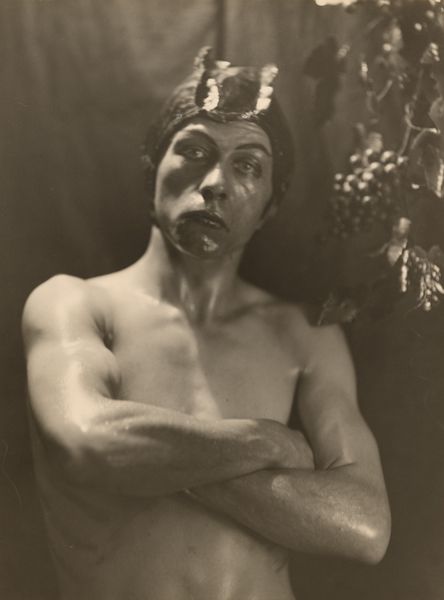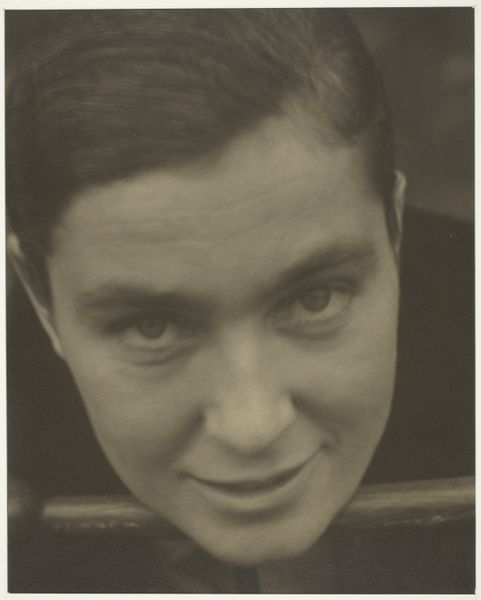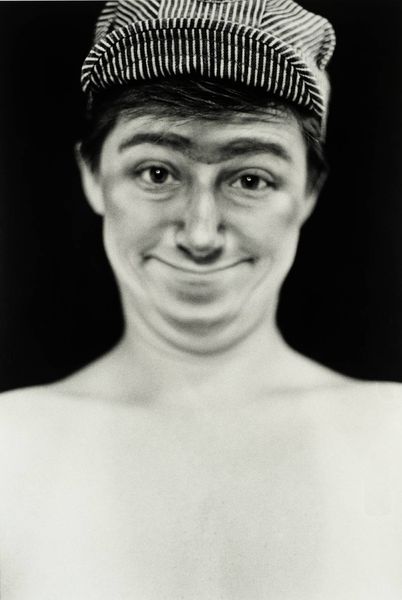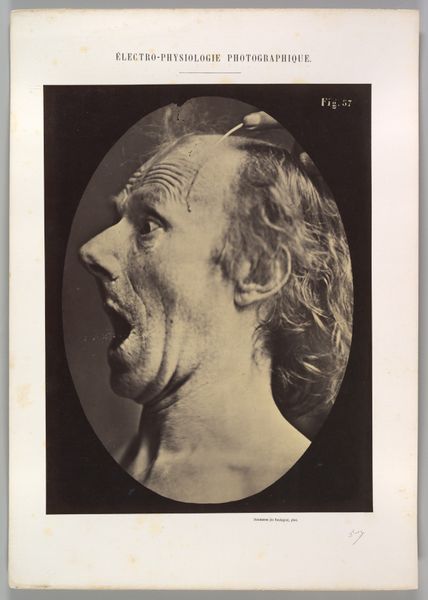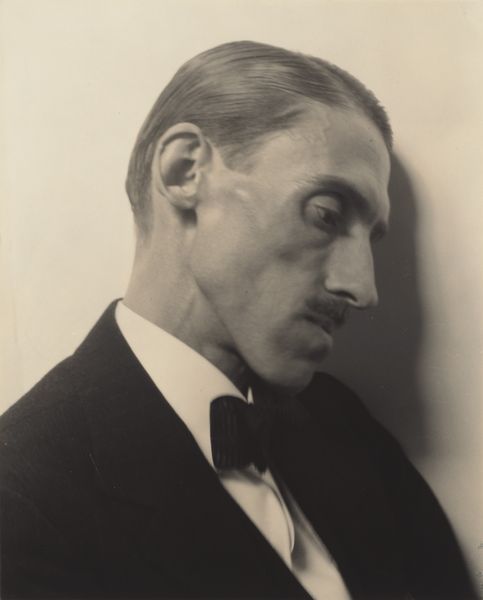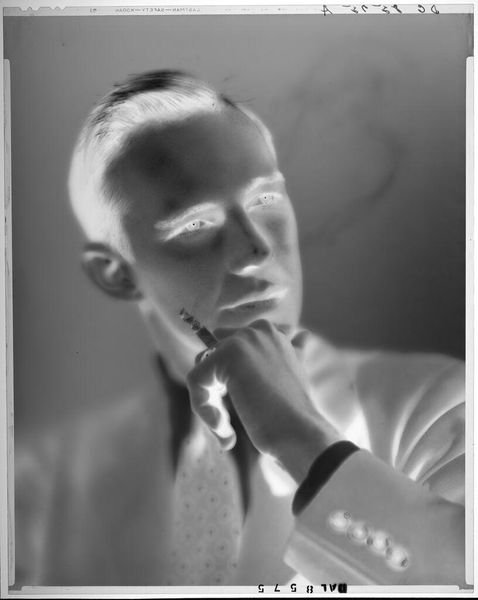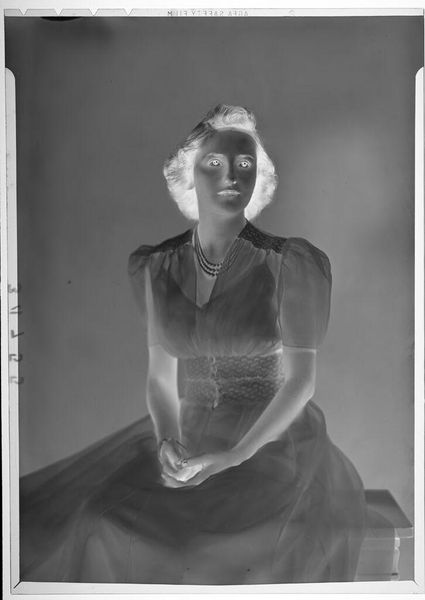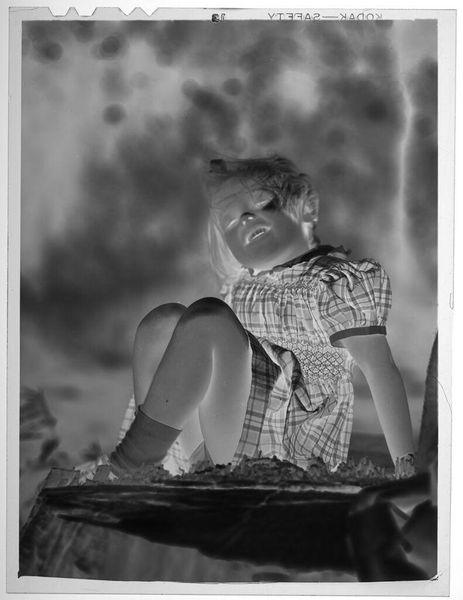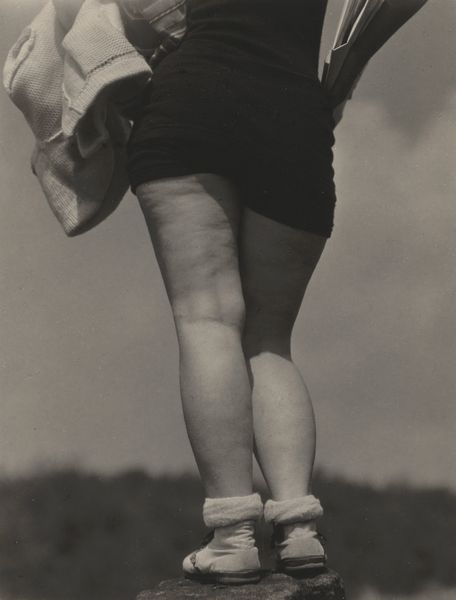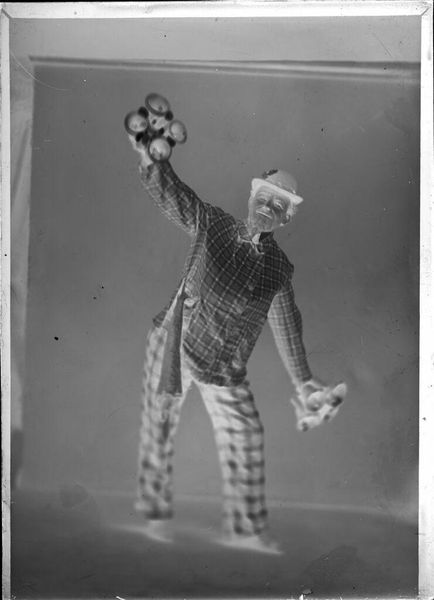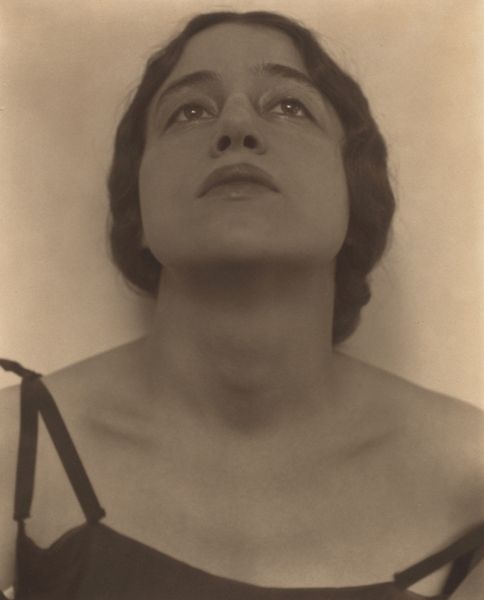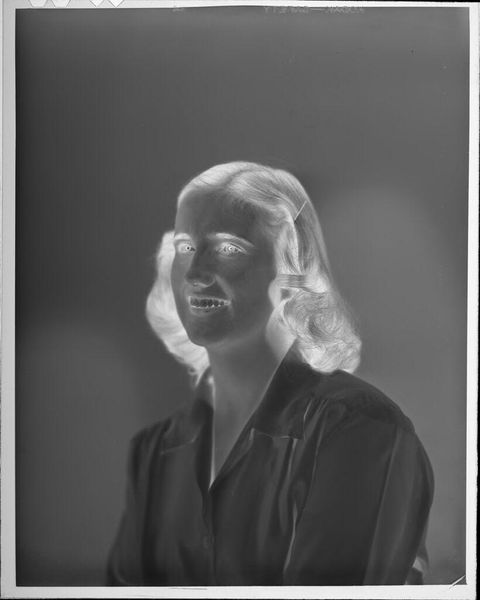
photography
#
portrait
#
low key portrait
#
portrait image
#
portrait
#
portrait subject
#
photography
#
portrait reference
#
portrait head and shoulder
#
single portrait
#
portrait drawing
#
facial portrait
#
modernism
#
realism
#
digital portrait
Dimensions: sheet (trimmed to image): 11.5 × 9.1 cm (4 1/2 × 3 9/16 in.) mount: 34.1 × 25.4 cm (13 7/16 × 10 in.)
Copyright: National Gallery of Art: CC0 1.0
Curator: Alright, let's dive into this portrait by Alfred Stieglitz, titled "Rebecca Salsbury Strand," circa 1924. It's a photograph, and it immediately strikes me as... intense. Editor: Intense is one word for it. Raw, maybe? I'm seeing a really tight crop, almost claustrophobic. You can almost feel the texture of the paper. The close proximity allows every wrinkle and grimace to really come forth. It's a little unsettling but also captivating. Curator: It’s more than unsettling. Think about Stieglitz's complex relationship with Rebecca, who was the wife of his protégé Paul Strand. The power dynamics are very apparent. The aggressive facial expression almost feels like a performance for Stieglitz’s camera. Editor: That’s interesting, seeing it as a performance. I was thinking about Stieglitz’s approach to photography itself, that emphasis on capturing the object “as it is.” The choice of black and white strengthens that effect, it seems to strip away any pretension or artifice. You see the subject laid bare. Curator: And isn't that very construct in itself? Stripping someone bare? In a patriarchal system, doesn't the gaze perpetuate an imbalance of power? Is it simply ‘revealing’ or is it enacting a type of symbolic violence? I would go further. Rebecca Salsbury Strand came into her own artistic powers after being around such male greats; did Stieglitz's photographic dominance of her undermine her own emerging artistic vision? Editor: Okay, so we agree the photographic process is revealing. The photograph also demonstrates something interesting, how commercial and studio practice in early modern photography used new approaches for different ends. On one hand, he's utilizing a kind of radical realism; and on the other, his approach can also flatten the three-dimensionality, and then heighten emotion by exploiting light and shadow. He is still a product of studio-making and portraiture; labor and consumption factor in here. Curator: Definitely. What’s captured or not is a testament to an era and medium rooted in cultural complexities and layered human intentions. The portrait's unsettling aura urges us to reflect beyond the surface, question the historical context, and deconstruct underlying socio-political narratives. Editor: Absolutely. When you start to look beyond what is just immediately depicted and begin examining context and approach, you get a totally different feeling from the artwork itself.
Comments
No comments
Be the first to comment and join the conversation on the ultimate creative platform.
